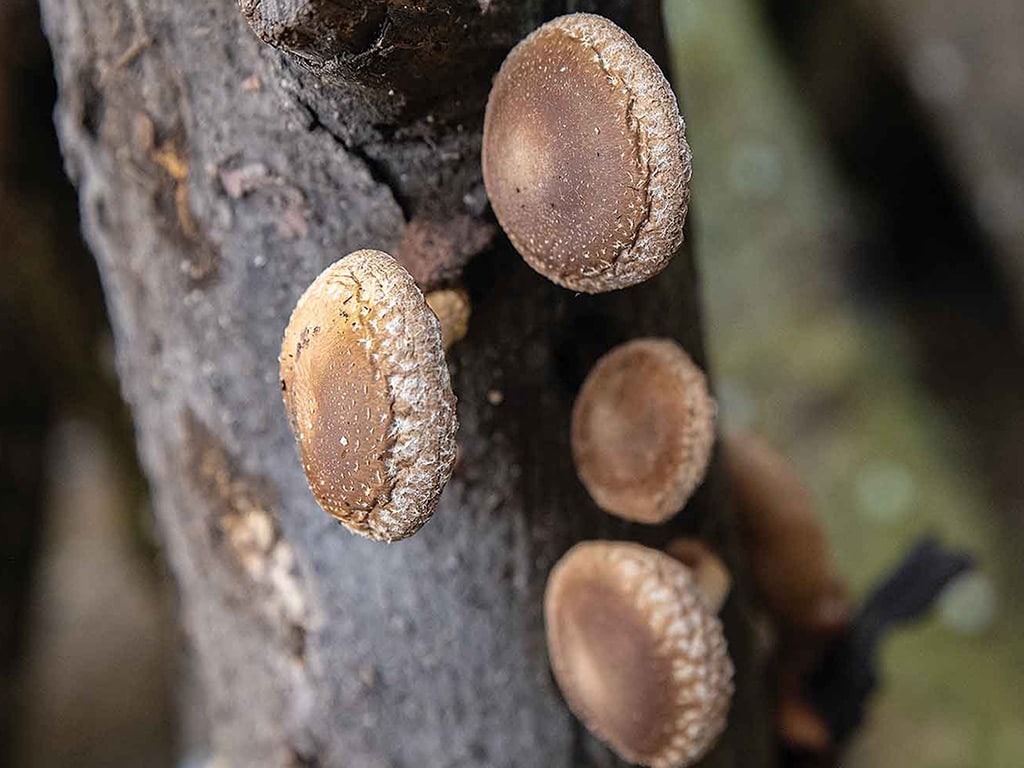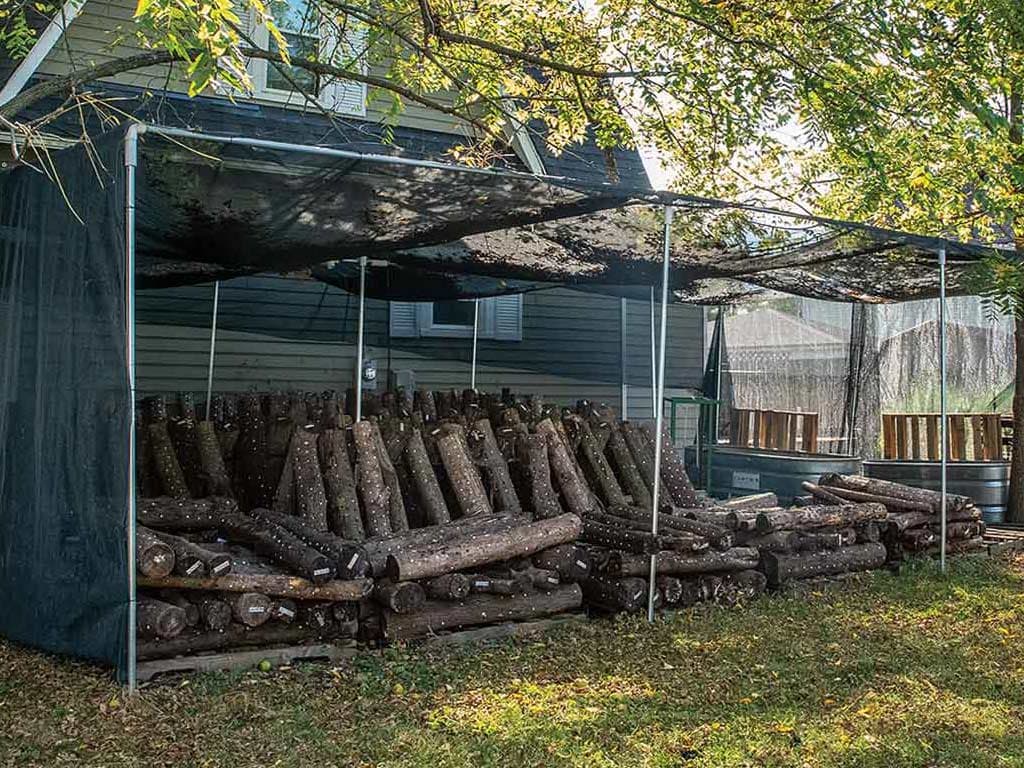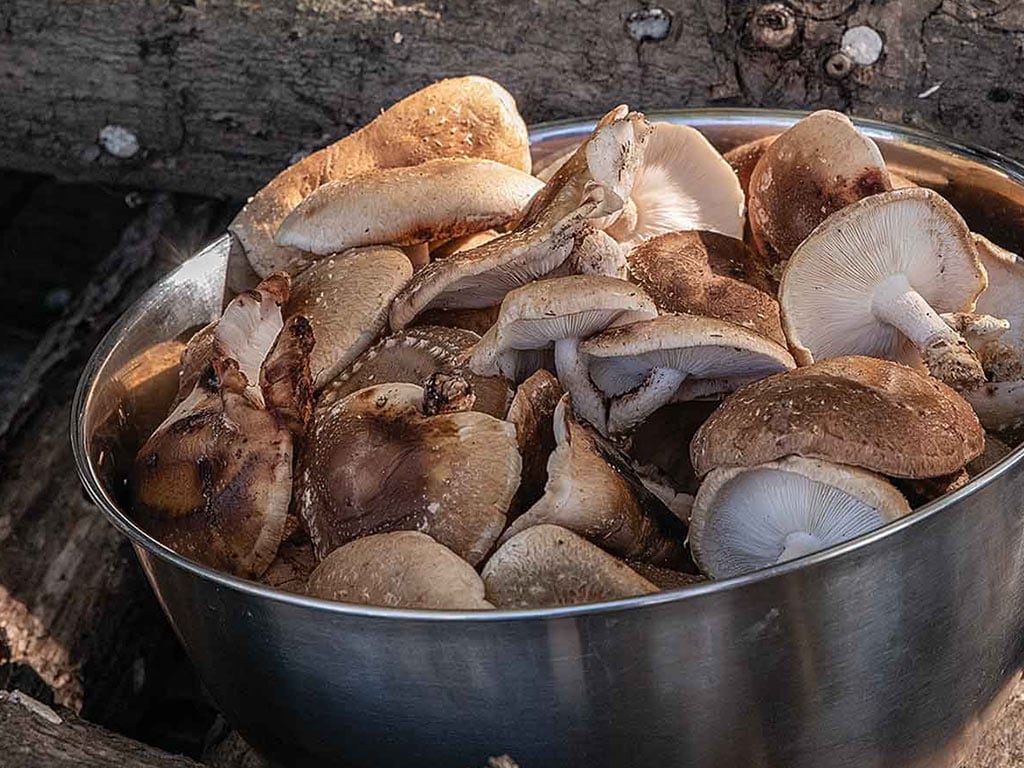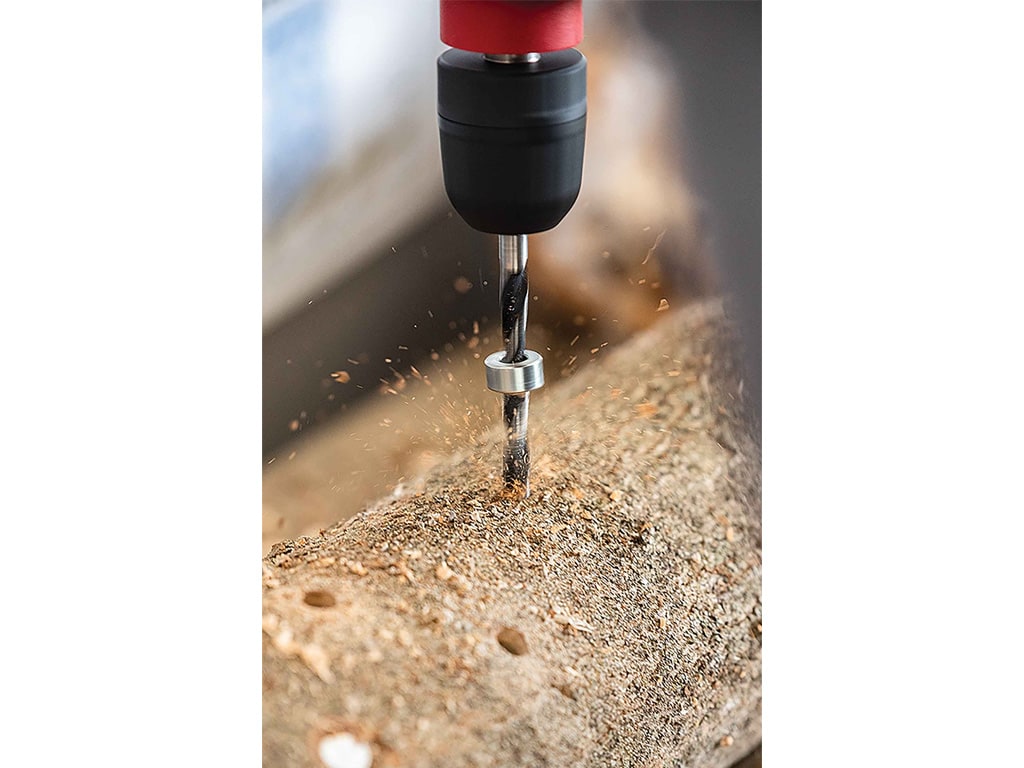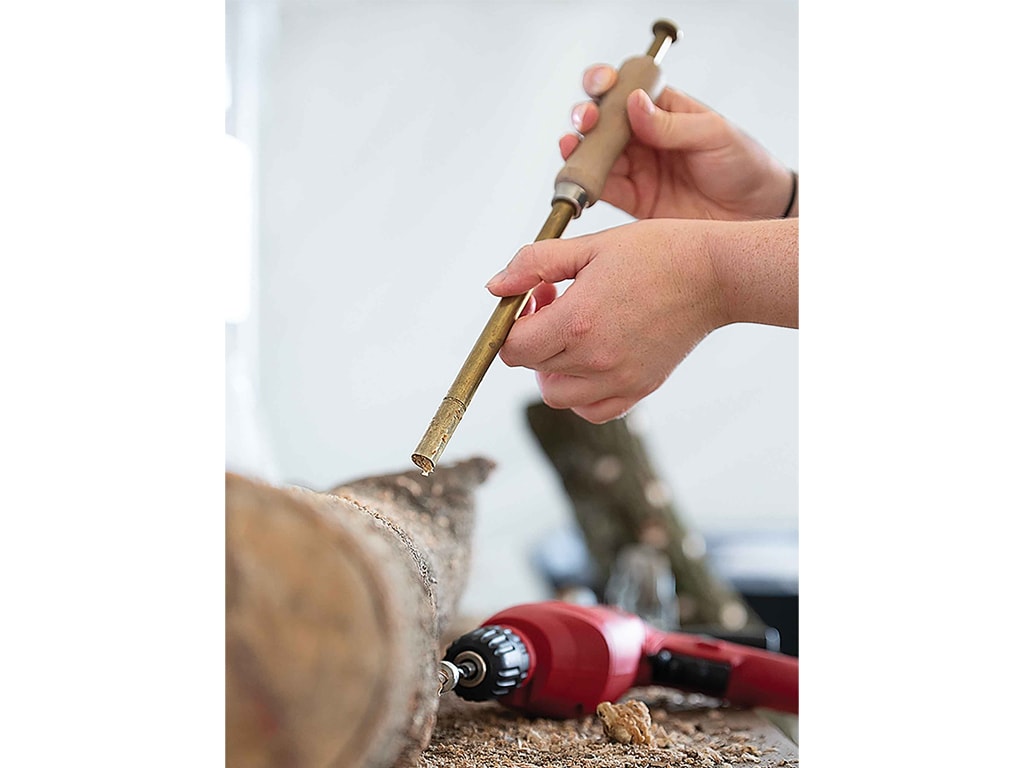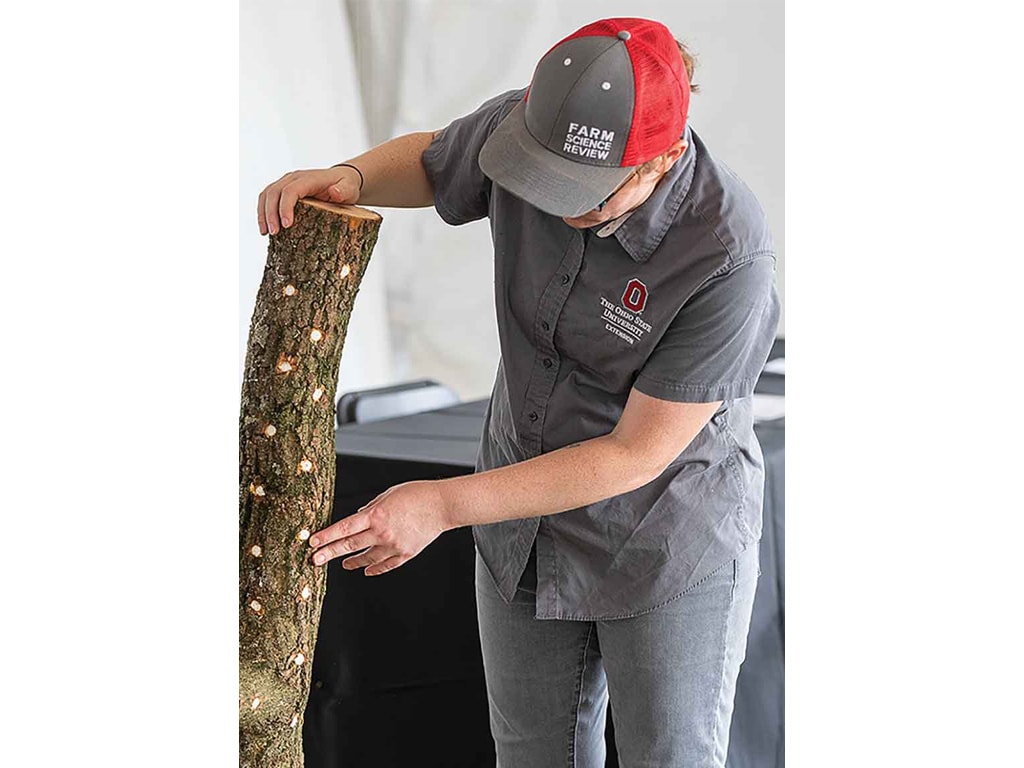Specialty/Niche June 01, 2025
Grow Your Own Gourmet
Creating a thriving mushroom garden.
by Katie Knapp
The north side of Marc Amante's house used to be like many others—a dusty patch dotted with only a few, mighty blades of grass reaching for what little sunlight could wrap around the roof line. Now, it is a maze of neatly stacked logs erupting with life.
Amante, an Extension educator at Ohio's Central State University, has turned his quarter-acre city lot into an urban farmstead. The usual vegetables and berries thrive in his full-sun backyard, while shiitake mushrooms flourish in the shadows.
"I hate mowing the lawn," he says with a grin and quickly adds he has always wanted to farm.
"I got really interested in things like permaculture and agroforestry," Amante explains, "integrating multiple types of production practices into the same space." His eyes light up as he describes his win-win scenario.
"Even without the shade cloth here I can't grow anything on the north side of my house—except for stuff that likes shade. There's not a lot of food that likes shade other than mushrooms."
Before diving in, he asked his local farmers' market manager what was missing. As luck would have it, the gap in the market was indeed mushrooms.
Now five years in, Amante has a few hundred shiitake logs which regularly produce about 20 pounds of mushrooms a week in season. That brings in $200-$400 at his local farmers' market on top of his other produce.
Chefs and home cooks alike seek out the prized mushrooms because they transform in the pan, developing a rich, meaty flavor and satisfying, chewy texture.
Above. Marc Amante has transformed the north side of his yard from dark and drab to a hotbed for mushroom cultivation. Erika Lyon demonstrates how to inoculate a log with shiitake spawn.
Spawning success. Erika Lyon, an Ohio State University Extension agriculture and natural resources educator, has also watched others recently take to backyard mushroom cultivation.
"Many homesteaders have been interested lately in growing different kinds of mushrooms," she says. "You can grow many outdoors, and some you can also grow indoors, as long as you have proper ventilation."
She ranks the types from beginner-friendly to challenging, with shiitake being the most approachable for outdoor cultivation.
Getting started doesn't require a large investment, just hardwood logs, natural shade, an electric drill, and a garden hose. But, it does require proper timing and a lot of patience.
"Most people already have the tools in their garage," Lyon notes, holding up a standard $30 drill fitted with a stop collar. This simple setup prevents drilling too deep into the logs during inoculation.
"Spawn is the only thing first-time or hobby growers usually have to buy," she adds.
More serious growers might opt for an angle grinder or standard drill, which can cut start-up time from an hour to just 15 minutes per log.
Ideally, logs should be harvested in the fall when nutrients have returned to the trunk. Amante says, this is when about 40% of the leaves have changed color. The best species to use are hard woods, but both Amante and Lyon believe part of the beauty of mushroom cultivation is repurposing otherwise useless space and material.
"The best log for the job is the log you have," Amante says simply. "If you have a tree that needs to come down, use it." He urges people to see thinning a wooded area as a source of a new hobby or even venture instead of a chore.
"If you get the right size log, optimal tree species, and maintain proper log moisture, you can get shiitake mushrooms within six months," Lyon explains. Under other scenarios, it could take as long as two years.
A single log can produce for about four years, yielding between a third of a pound to a pound and a half per flush.
Storage is key to success. "It's best to store the logs underneath evergreen trees," Lyon advises. "They create a micro-climate that tends to work well with mushroom production." The steady cover prevents the logs from drying out in winter's cold winds or summer's harsh sun.
More detailed instructions and best practices are available on the Ohio State University Extension website: ohioline.osu.edu.
Back in his shade-dappled mushroom garden, Amante checks a log labeled "#1 Son." "Yes," he says, looking at the particular shiitake strain, "this nice curl is what you really want." ‡
Read More

AGRICULTURE, EDUCATION
Breaking the Cold Barrier
Peach varieties push northern boundaries.

